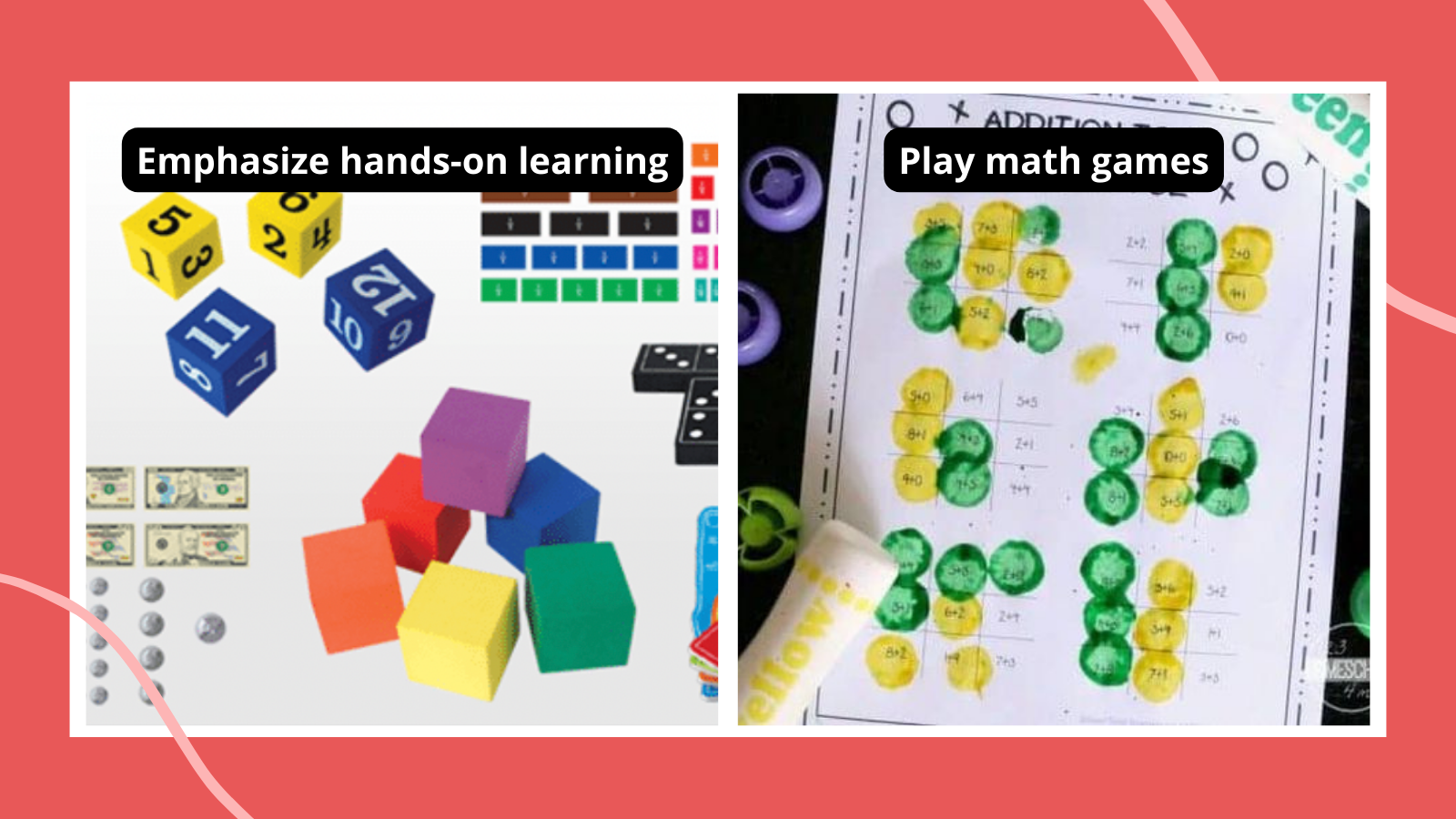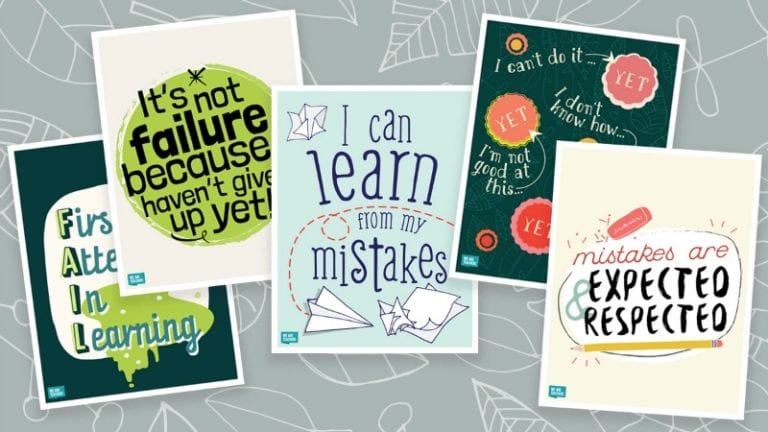We all want our kids to succeed in math. In most districts, standardized tests measure students’ understanding, yet nobody wants to teach to the test. Over-reliance on test prep materials and “drill and kill” worksheets steal instructional time while also harming learning and motivation. But sound instruction and good test scores aren’t mutually exclusive. Being intentional and using creative approaches to your instruction can get students excited about math. These essential strategies in teaching mathematics can make this your class’s best math year ever!
1. Raise the bar for all

WeAreTeachers
For math strategies to be effective, teachers must first get students to believe that they can be great mathematicians. Holding high expectations for all students encourages growth. As early as second grade, girls have internalized the idea that math is not for them. It can be a challenge to overcome the socially acceptable thought, I’m not good at math, says Sarah Bax, a math teacher at Hardy Middle School in Washington, D.C.
Rather than success being a function of how much math talent they’re born with, kids need to hear from teachers that anyone who works hard can succeed. “It’s about helping kids have a growth mindset,” says Bax. “Practice and persistence make you good at math.” Build math equity and tell students about the power and importance of math with enthusiasm and high expectations.
(Psst … you can snag our growth mindset posters for your math classroom here.)
2. Don’t wait—act now!
Look ahead to the specific concepts students need to master for annual end-of-year tests, and pace instruction accordingly. Think about foundational skills they will need in the year ahead.
“You don’t want to be caught off guard come March thinking that students need to know X for the tests the next month,” says Skip Fennell, project director of Elementary Mathematics Specialists and Teacher Leaders Project and professor emeritus at McDaniel College in Westminster, Maryland. Know the specific standards and back-map your teaching from the fall so students are ready, and plan to use effective math strategies accordingly.
[contextly_auto_sidebar]
3. Create a testing pathway
You may not even see the results of standardized tests until next school year, but you have to prepare students for it now. Use formative assessments to ensure that students understand the concepts. What you learn can guide your instruction and determine the next steps, says Fennell. “I changed the wording because I didn’t want to suggest that we are in favor of ‘teaching to the test.'”
Testing is not something separate from your instruction. It should be integrated into your planning. Instead of a quick exit question or card, give a five-minute quiz, an open-ended question, or a meaningful homework assignment to confirm students have mastered the math skill covered in the day’s lesson. Additionally, asking students to explain their thinking orally or in writing is a great way to determine their level of understanding. A capable digital resource, designed to monitor your students in real-time, can also be an invaluable tool, providing actionable data to inform your instruction along the way.
4. Observe, modify, and reevaluate
Sometimes we get stuck in a mindset of “a lesson a day” in order to get through the content. However, we should keep our pacing flexible, or kids can fall behind. Walk through your classroom as students work on problems and observe the dynamics. Talk with students individually and include “hinge questions” in your lesson plans to gauge understanding before continuing, suggests Fennell. In response, make decisions to go faster or slower or put students in groups.
5. Read, read, read!
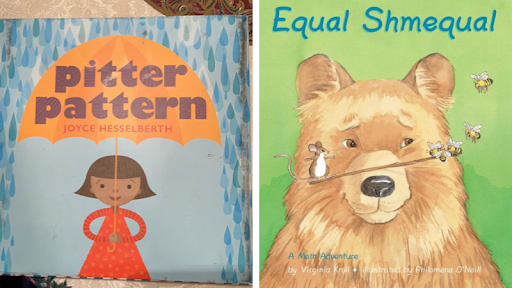
Amazon
Although we don’t often think of reading as a math strategy, there’s almost nothing better to get students ready to learn a new concept than a great read-aloud. Kids love to be read to, and the more we show students how math is connected to the world around us, the more invested they become. Reading books with math connections helps children see how abstract concepts connect to their lives.
6. Personalize and offer choice
When students are given the opportunity to choose how they learn and demonstrate their understanding of a concept, their buy-in and motivation increase. It gives them the chance to understand their preferred learning style, provides agency over their own learning, and allows for the space to practice different strategies to solve math problems. Give students a variety of options, such as timed exercises, projects, or different materials, to show that they’ve mastered foundational skills. As students show what they’ve learned, teachers can track understanding, figure out where students need additional scaffolding or other assistance, and tailor lessons accordingly.
7. Plant the seeds!
Leave no child inside! A school garden is a great way to apply math concepts in a fun way while instilling a sense of purpose in your students. Measurement, geometry, and data analysis are obvious topics that can be addressed through garden activities, but also consider using the garden to teach operations, fractions, and decimals. Additionally, garden activities can help promote character education goals like cooperation, respect for the earth, and, if the crops are donated to organizations that serve those in need, the value of giving to others.
8. Add apps appropriately
The number of apps (interactive software used on touch-screen devices) available to support math instruction has increased rapidly in recent years. Kids who are reluctant to practice math facts with traditional pencil-and-paper resources will gladly do essentially the same work as long as it’s done on a touch screen. Many apps focus on practice via games, but there are some that encourage children to explore the content at a conceptual level.
9. Encourage math talk
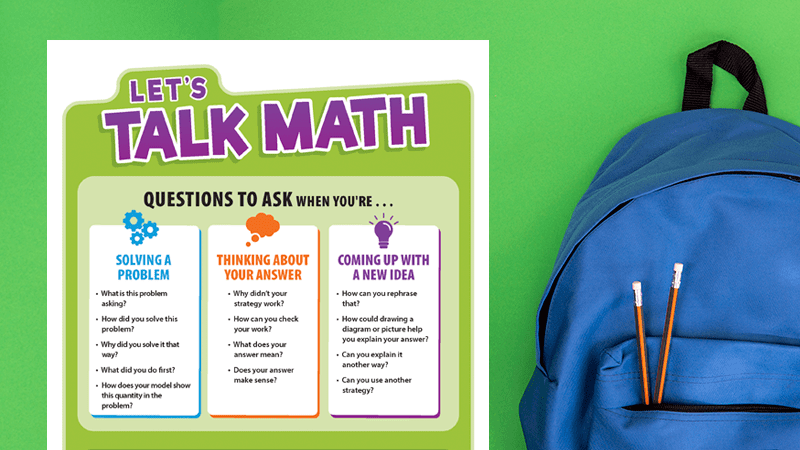
WeAreTeachers
Communicating about math helps students process new learning and build on their thinking. Engage students during conversations and have them describe why they solved a problem in a certain way. “My goal is to get information about what students are thinking and use that to guide my instruction, as opposed to just telling them information and asking them to parrot things back,” says Delise Andrews, who taught math (K–8) and is now a grade 3–5 math coordinator in the Lincoln Public Schools in Nebraska.
Instead of seeking a specific answer, Andrews wants to have deeper discussions to figure out what a student knows and understands. “True learning happens a lot around talking and doing math—not just drilling,” she says. Of course, this math strategy not only requires students to feel comfortable expressing their mathematical thinking, but also assumes that they have been trained to listen respectfully to the reasoning of their classmates.
Learn more: Free Let’s Talk Math Poster
10. The art of math
Almost all kids love art, and visual learners need a math strategy that works for them too, so consider integrating art and math instruction for one of the easiest strategies in teaching mathematics. Many concepts in geometry, such as shapes, symmetry, and transformations (slides, flips, and turns), can be applied in a fun art project. Also consider using art projects to teach concepts like measurement, ratios, and arrays (multiplication/division).
11. Seek to develop understanding
Meaningful math education goes beyond memorizing formulas and procedures. Memorization does not foster understanding. Set high goals, create space for exploration, and work with the students to develop a strong foundation. “Treat the kids like mathematicians,” says Andrews. Present a broad topic, review various strategies for solving a problem, and then elicit a formula or idea from the kids rather than starting with the formula. This creates a stronger conceptual understanding and mental connections with the material for the student.
12. Give students time to reflect
Sometimes teachers get so caught up in meeting the demands of the curriculum and the pressure to “get it all done” that they don’t give students the time to reflect on their learning. Students can be asked to reflect in writing at the end of an assignment or lesson, via class or small group discussion, or in interviews with the teacher. It’s important to give students the time to think about and articulate the meaning of what they’ve learned, what they still don’t understand, and what they want to learn more about. This provides useful information for the teacher and helps the student monitor their own progress and think strategically about how they approach mathematics.
13. Allow for productive struggle
When giving students an authentic problem, ask a big question and let them struggle to figure out several ways to solve it, suggests Andrews. “Your job as a teacher is to make it engaging by asking the right questions at the right time. So you don’t take away their thinking, but you help them move forward to a solution,” she says.
Provide as little information as possible but enough so students can be productive. Effective math teaching supports students as they grapple with mathematical ideas and relationships. Allow them to discover what works and experience setbacks along the way as they adopt a growth mindset about mathematics.
14. Emphasize hands-on learning
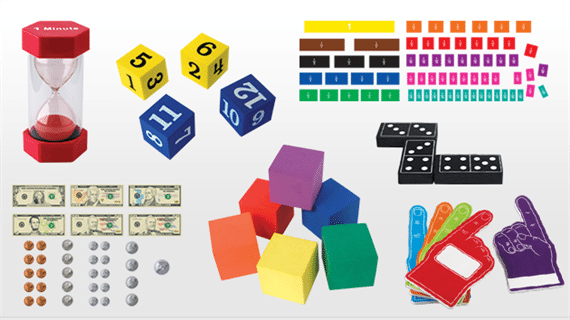
WeAreTeachers; Teacher Created Resources
In math, there’s so much that’s abstract. Hands-on learning is a strategy that helps make the conceptual concrete. Consider incorporating math manipulatives whenever possible. For example, you can use LEGO bricks to teach a variety of math skills, including finding area and perimeter and understanding multiplication.
15. Build excitement by rewarding progress
Students—especially those who haven’t experienced success—can have negative attitudes about math. Consider having students earn points and receive certificates, stickers, badges, or trophies as they progress. Weekly announcements and assemblies that celebrate the top players and teams can be really inspiring for students. “Having that recognition and moment is powerful,” says Bax. “Through repeated practice, they get better, and they are motivated.” Through building excitement, this allows for one of the best strategies in teaching mathematics to come to fruition.
16. Choose meaningful tasks
Kids get excited about math when they have to solve real-life problems. For instance, when teaching sixth graders how to determine area, present tasks related to a house redesign, suggests Fennell. Provide them with the dimensions of the walls and the size of the windows and have them determine how much space is left for the wallpaper. Or ask them to consider how many tiles they would need to fill a deck. You can absolutely introduce problem-based learning, even in a virtual world.
17. Play math games
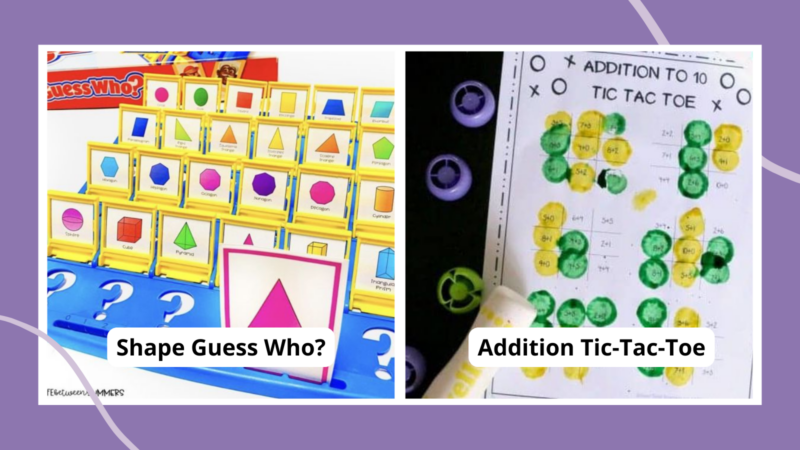
Life Between Summers/Shape Guess Who via lifebetweensummers.com; 123 Homeschool 4 Me/Tic-Tac-Toe Math Game via 123homeschool4me.com; WeAreTeachers
Student engagement and participation can be a challenge, especially if you’re relying heavily on worksheets. Games, like these first grade math games, are an excellent way to make the learning more fun while simultaneously promoting strategic mathematical thinking, computational fluency, and understanding of operations. Games are especially good for kinesthetic learners and foster a home-school connection when they’re sent home for extra practice.
18. Set up effective math routines
Students generally feel confident and competent in the classroom when they know what to do and why they’re doing it. Establishing routines in your math class and training kids to use them can make math class efficient, effective, and fun! For example, consider starting your class with a number sense routine. Rich, productive small group math discussions don’t happen by themselves, so make sure your students know the “rules of the road” for contributing their ideas and respectfully critiquing the ideas of others.
19. Encourage teacher teamwork and reflection
You can’t teach in a vacuum. Collaborate with other teachers to improve your math instruction skills. Start by discussing the goal for the math lesson and what it will look like, and plan as a team to use the most effective math strategies. “Together, think through the tasks and possible student responses you might encounter,” says Andrews. Reflect on what did and didn’t work to improve your practice.
20. Move!
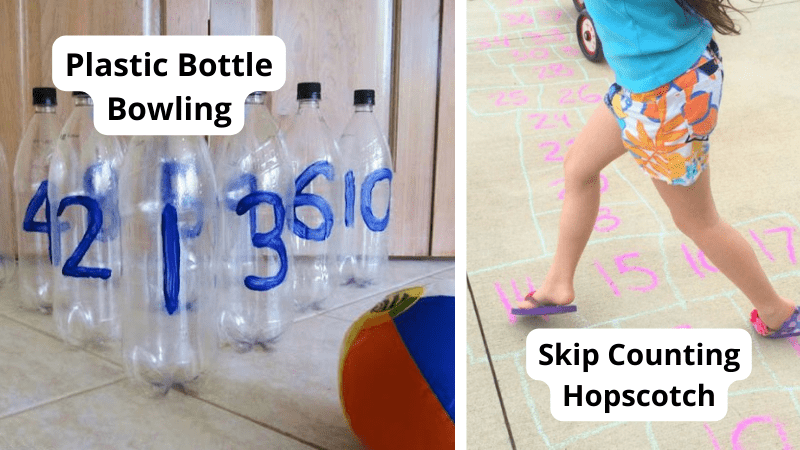
Learn With Play at Home/Plastic Bottle Number Bowling via learnwithplayathome.com; Math Geek Mama/Skip-Counting Hopscotch via mathgeekmama.com; WeAreTeachers
Adding movement and physical activity to your instruction might seem counterintuitive as a math strategy, but asking kids to get out of their seats can increase their motivation and interest. For example, you could ask students to:
- Make angles with their arms
- Create a square dance that demonstrates different types of patterns
- Complete a shape scavenger hunt in the classroom
- Run or complete other exercises periodically and graph the results
The possibilities of these strategies in teaching mathematics are limited only by your imagination and the math concepts you need to cover. Check out these active math games.
21. Be a lifelong learner
Generally, students will become excited about a subject if their teacher is excited about it. However, it’s hard to be excited about teaching math if your understanding hasn’t changed since you learned it in elementary school. For example, if you teach how to divide fractions by fractions and your understanding is limited to following the “invert and multiply” rule, take the time to understand why the rule works and how it applies to the real world. When you have confidence in your own mathematical expertise, then you can teach math confidently and joyfully to best apply strategies in teaching mathematics.
What do you feel are the most important strategies in teaching mathematics? Share in the comments below.
Want more articles like this? Be sure to subscribe to our newsletters.
Learn why it’s important to honor all math strategies in teaching math. Plus, check out the best math websites for teachers.
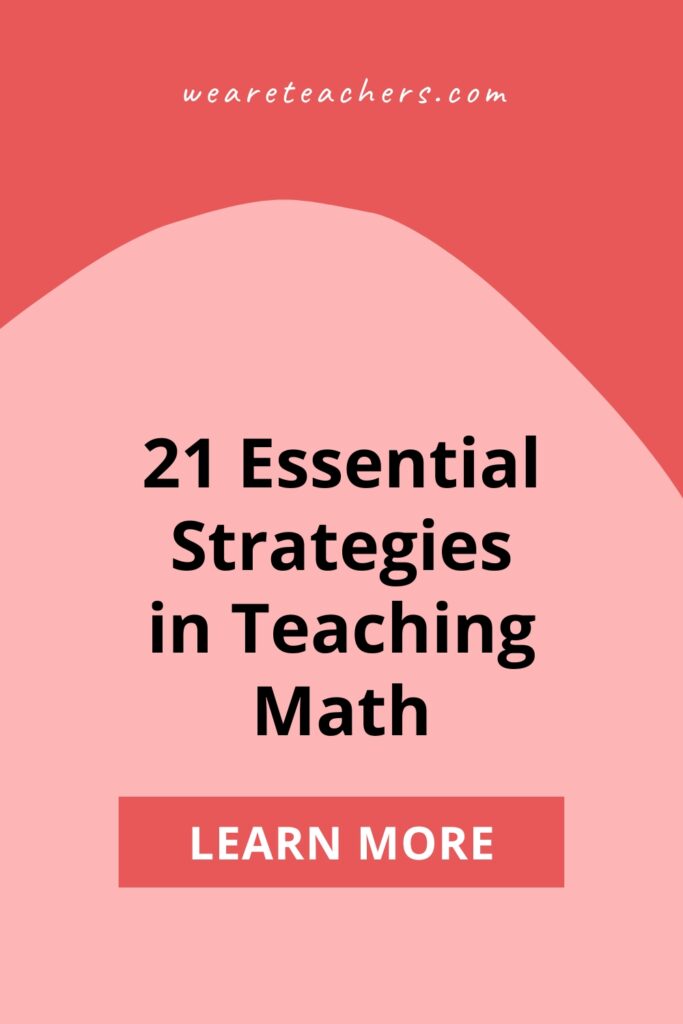
WeAreTeachers
